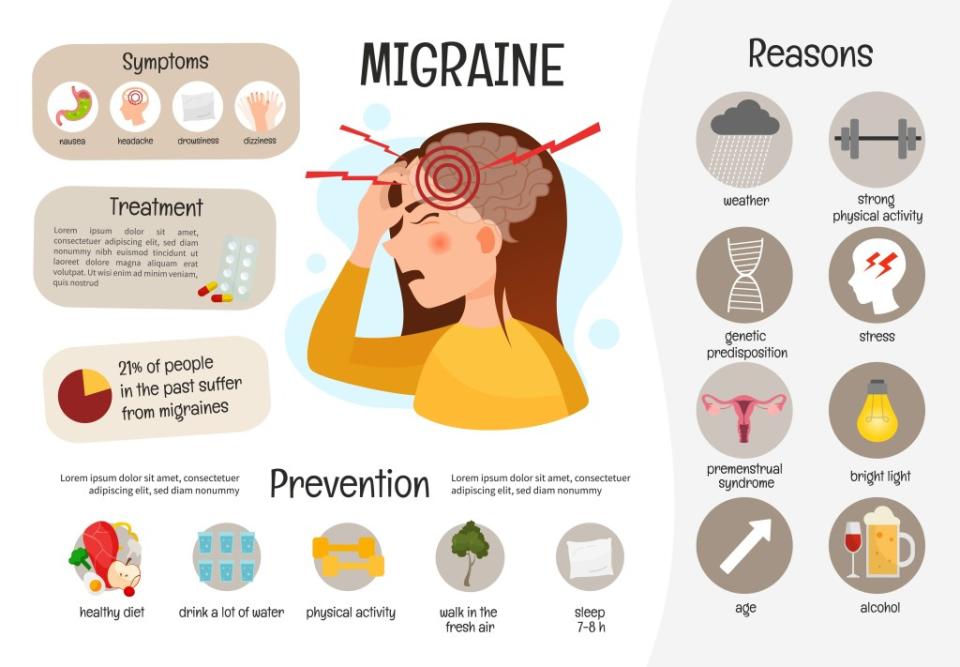Migraines an ‘important’ warning sign for strokes in young adults: new research

Here’s another headache for millennials and Gen Zers — if they suffer from migraines, they may face an increased risk of stroke, new research finds.
The study authors found that nontraditional stroke risk factors, such as migraines, blood clotting disorders, kidney failure, and autoimmune diseases, were “significantly associated” with the incidence of strokes in adults younger than 45.
“These findings are significant because most of our attention has been focused on traditional risk factors,” the lead author, Dr. Michelle Leppert, an assistant professor of neurology at the University of Colorado School of Medicine, said in a statement.
“We should not ignore nontraditional stroke risk factors and only focus on traditional risk factors; both are important to the development of strokes among young people,” she added.
Traditional stroke risk factors include high blood pressure, high cholesterol, Type 2 diabetes, tobacco use, obesity, physical inactivity, alcohol abuse, and coronary heart disease.

Leppert’s team used Colorado health insurance claims from 2012 to 2019 to compare the data of more than 2,600 people who had strokes to more than 7,800 people who did not.
Among adults younger than 35, more strokes were tied to nontraditional risk factors (31% in men and about 43% in women) than traditional risk factors (about 25% in men and more than 33% in women).
The researchers found that migraine was the most important nontraditional stroke risk factor among this age group, leading to 20% of strokes in men and nearly 35% in women.
“There have been many studies demonstrating the association between migraines and strokes, but to our knowledge, this study may be the first to demonstrate just how much stroke risk may be attributable to migraines,” Leppert said.

Migraine is a neurological disorder often characterized by an intense headache — the American Migraine Foundation estimates at least 40 million Americans live with the condition.
And more than 795,000 Americans have a stroke each year, according to the Centers for Disease Control and Prevention, with 71 the most common age for men and 76 for women.
Yet strokes are on the rise in younger people. 40-year-old Kid Cudi, for one, said he had one in 2016. Hailey Bieber, 27, said she experienced a “mini stroke” in 2022.
“In fact, the younger they are at the time of stroke, the more likely their stroke is due to a nontraditional risk factor,” Leppert said about young adults. “We need to better understand the underlying mechanisms of these nontraditional risk factors to develop targeted interventions.”
The latest research finds that traditional stroke risk factors peak among adults 35 to 44, accounting for nearly 33% of strokes in men and about 40% in women.

Among people 45 to 55 years old, high blood pressure was the most important traditional stroke risk factor.
Nontraditional risk factors were responsible for more than 19% of strokes in men and nearly 28% in women in this Gen X group.
Leppert’s research was published Tuesday in the journal Circulation: Cardiovascular Quality and Outcomes.
She acknowledged that study limitations include a lack of information about participants’ race and ethnicity and that the data stems from a region affected by altitude, which “may create unique conditions.”

